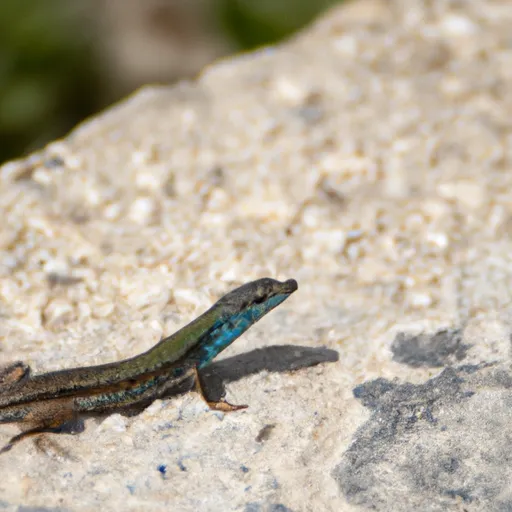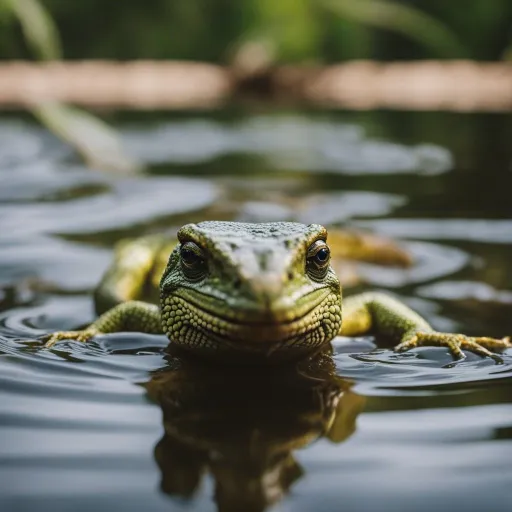
So, you’ve stumbled upon the fascinating world of blue belly lizards, and curiosity has gotten the best of you.
You find yourself pondering about their dietary habits, scratching your head in wonder. Well, fret no more!
In this article, we will uncover the mysterious culinary preferences of these colorful reptiles and unveil the secrets of what exactly blue belly lizards feast upon.
Get ready to embark on an exciting journey into the stomachs of these marvelous creatures as we explore their eclectic taste in food.
Diet of Blue Belly Lizards
Blue Belly Lizards, also known as Western Fence Lizards or Sceloporus occidentalis, have a diverse and interesting diet.
These small reptiles mainly feed on insects, making them insectivores. However, they have been known to occasionally consume plant matter as well as other small animals.
Understanding the food habits of Blue Belly Lizards is essential for their overall health and well-being, whether they are living in the wild or as pets in captivity.
Overview of Blue Belly Lizards’ Food Habits
Blue Belly Lizards are opportunistic foragers, meaning they will eat a variety of prey depending on availability. They are agile hunters and are equipped with sharp claws and a long, sticky tongue to capture and consume their food. Their jaw and teeth adaptations allow them to effectively hold and crush their prey, making them efficient predators.
Insects as the Main Food Source
Insects form the bulk of the Blue Belly Lizards’ diet. These lizards have a predatory nature and prefer to consume live prey whenever possible. They actively hunt for insects such as beetles, ants, crickets, grasshoppers, spiders, and various larvae. These small arthropods provide the necessary nutrients, proteins, and fats that Blue Belly Lizards need to thrive.

Variety of Insects Consumed
Blue Belly Lizards have a diverse selection of insects they consume. They are known to feed on insects of various sizes, from tiny ants to larger beetles. The availability of prey in their habitat determines the diversity of their diet. Some common insects that Blue Belly Lizards prey upon include grasshoppers, crickets, termites, caterpillars, and even small spiders.
Impact of Diet on Blue Belly Lizards’ Health
The diet of Blue Belly Lizards plays a crucial role in their overall health and well-being. These lizards have specific nutritional requirements that need to be met for optimal health. Balancing calcium and phosphorus is essential to prevent metabolic bone disease, a common health issue in reptiles. Providing a diet with suitable protein and fat content helps support their growth, reproduction, and energy needs. It is also important to ensure they receive adequate vitamin and mineral intake to prevent deficiencies and promote proper bodily functions.

Seasonal Changes in Diet
Blue Belly Lizards’ diet may also undergo seasonal changes. In colder months or during hibernation, their feeding patterns may decrease as insects become less active. However, during warmer months, their feeding activity tends to increase as insects and other prey become more abundant. Temperature fluctuations play a significant role in determining the availability and activity level of insects, which in turn affects the lizards’ food consumption.
Hunting Techniques and Predatory Behavior
Blue Belly Lizards are active foragers and use various hunting techniques to capture their prey. They are known to employ ambushing and pouncing tactics, where they lie in wait for unsuspecting insects and swiftly strike when the opportunity arises. They may also use chasing and pursuit strategies, especially when targeting faster-moving prey. Their agility and quick reflexes enable them to successfully capture their food.
Vegetation and Plant Matter in Their Diet
While Blue Belly Lizards primarily rely on insects as their main food source, they may occasionally consume plant matter as well. Some individuals may exhibit herbivorous behavior and graze on grasses, leaves, flowers, and other vegetation. This behavior serves as a supplemental source of nutrition, providing additional vitamins and minerals. However, it is important to note that the overall percentage of plant matter in their diet is relatively low compared to their insect consumption.
Supplemental Food Sources
In addition to insects and occasional plant matter, Blue Belly Lizards may also consume other small animals as opportunistic feeders. They have been observed eating fruits and berries when available, which can provide a source of hydration and additional nutrients. Furthermore, they may scavenge on carrion, such as small dead animals, as a source of food. These supplemental food sources allow Blue Belly Lizards to adapt to different environments and maintain their nutritional needs.
Feeding Frequency and Quantity
The frequency and quantity of food consumed by Blue Belly Lizards can vary based on factors such as age, size, metabolism, and activity level. Juvenile lizards require more frequent feedings compared to adults. Generally, feeding them small meals every day or every few days is recommended. Monitoring their body condition and ensuring they maintain a healthy weight is essential. It is important not to overfeed or underfeed them, as both can have detrimental effects on their health.
Special Considerations for Pet Blue Belly Lizards
For pet Blue Belly Lizards, it is crucial to recreate their natural dietary variations as closely as possible. Offering a balanced diet consisting of live insects, occasional plant matter, and even small amounts of fruit can help fulfill their nutritional needs. Providing a variety of insects, such as crickets, mealworms, and roaches, ensures they receive a diverse range of nutrients. It is important to avoid feeding them insects caught in the wild, as these may carry harmful pesticides or parasites.
Additionally, it is essential to provide proper nutrition in captivity. Offering a calcium supplement or dusting prey with calcium powder helps fulfill their calcium requirements and prevent metabolic bone disease. Ensuring a suitable temperature gradient in their enclosure encourages proper digestion and activity levels. Regularly cleaning their food and water dishes helps maintain a hygienic feeding environment.
Finally, it is important to be aware of harmful foods and toxins that should be avoided. Some common foods that are toxic to Blue Belly Lizards include avocado, onion, garlic, and chocolate. These can be harmful and potentially fatal if ingested. It is best to consult with a reptile veterinarian or experienced reptile keeper for specific dietary recommendations and guidelines for pet Blue Belly Lizards.
Final Thoughts
In conclusion, the diet of Blue Belly Lizards primarily consists of insects, providing them with the necessary nutrients for their health and survival.
Their diverse selection of prey, occasional consumption of plant matter, and ability to utilize supplemental food sources allow them to adapt to their environment.
Whether in the wild or as pets, providing a balanced and varied diet is vital for the overall well-being of Blue Belly Lizards.



